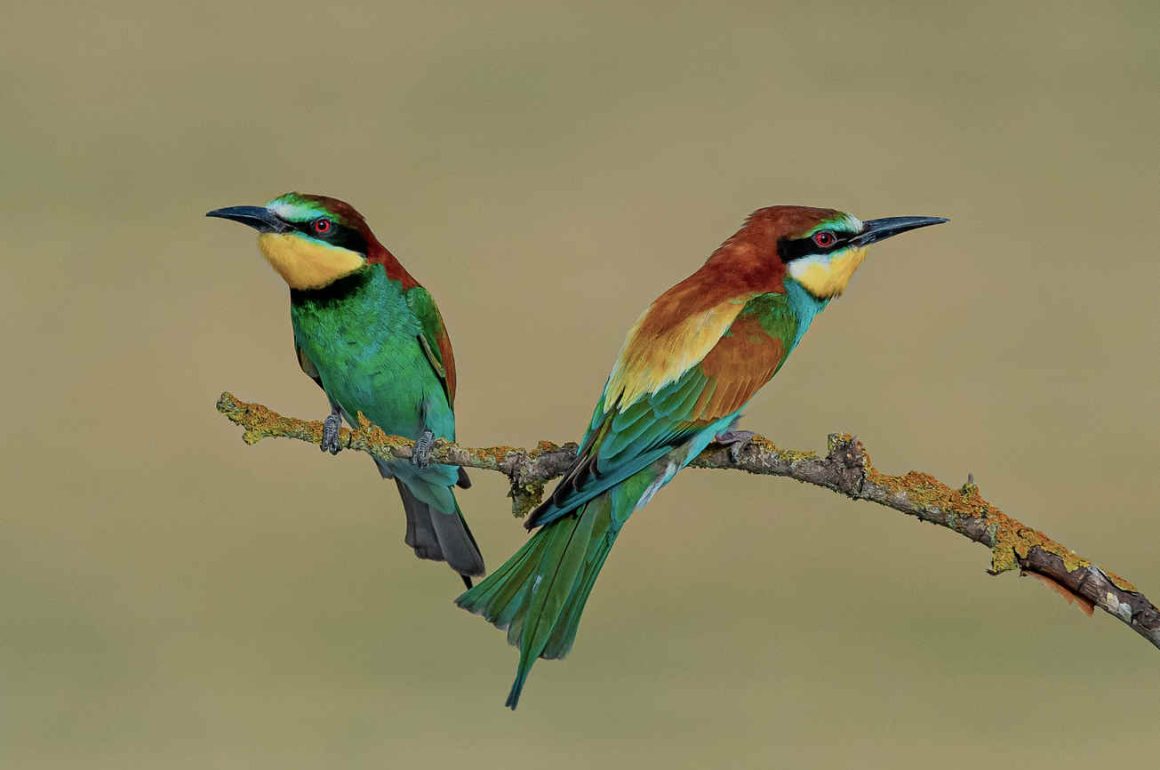
By Itamar Procaccia, The Weizmann Institute of Science, Rehovot 7610001, Israel
Itamar Procaccia is a professor at the Weizmann Institute in Rehovot, Israel, specializing in the Physics of Complex Systems. During his career, he worked on and contributed to the study of chaos in physical systems, the turbulence of fluids, the physics of disorder, and the creation of fractal geometries in nature. Besides physics, he is an avid art collector and enjoys bird photography as a serious hobby.
Israel is blessed with three species of Bee-eaters out of the twenty-seven Merops species in the world. The Bee-eaters live primarily in the Old World (mainly in Asia and Africa), with a few species in Australia and New Guinea. As their name indicates, Bee-eaters normally consume about 250 bees and other flying insects per day. But not only bees and wasps – Bee-eaters have been recorded eating beetles, mayflies, stoneflies, cicadas, termites, crickets, grasshoppers, mantises, true flies, and moths. The largest part of their diet is bees and wasps, with the average being 70% of their diet. Interestingly, caught bees and wasps are not eaten right away. Rather, they are beaten against a branch to discard the sting before the insect is swallowed. They nest in long burrows dug by themselves in the ground, preferring horizontal cliffs where a whole colony finds enough space for every pair to own its private tunnel, see Fig.1. The preferred locations for nesting are adjacent to scrublands where they enjoy a variety of available insects.

Fig. 1: Typical nesting colony of the European Bee-eater (Merops apiaster), burrowed in a limestone cliff, in Modiin, Israel.
Bee-eaters typically mate for life, and the nesting burrows are excavated each year. A burrow could be reused, but is usually not because it might be occupied by other birds, snakes, and bats. One report mentioned that an estimated 10,000 bee-eaters lived in a colony in Africa.
The most common Merops in Israel is the European Bee-eater (Merops apiaster). This species has a wide distribution; it breeds in southern and central Europe, northern and southern Africa, and western Asia. Except for the resident southern African population, the species is strongly migratory, wintering in tropical Africa. A very colorful bird, see Fig.2, its world population is estimated between fourteen and twenty-five million adult specimens, and thus is categorized as LC (Least Concern) in the IUCN Red List. Its body length is 25-29 cm, with a weight of 38-68 grams.
In Israel, M. apiaster appear in numbers during spring and fall, and many pairs choose to nest along the Mediterranean coast, from Beersheba north, and in the Jordan valley north of Jericho. Others only migrate through Israel to Europe in the Spring, returning to Africa in the fall. Unfortunately, the future of M. apiaster in Israel is not guaranteed – there is continuous damage to their preferred habitat, due to building and development that destroy the open scrublands that they critically depend on for feeding.
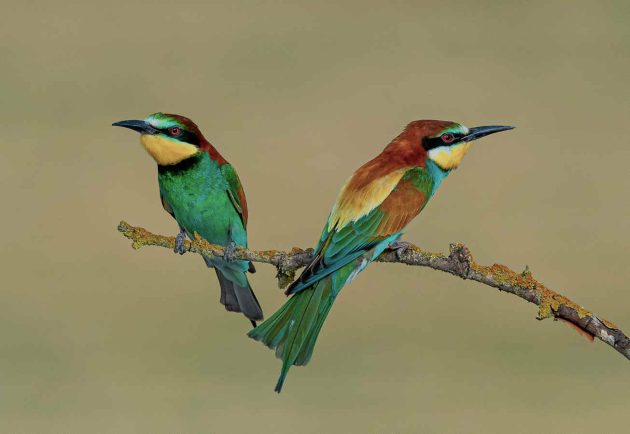
Fig. 2: A pair of European Bee-eaters, showing the wonderful colors of the species from the front and from the back.
Mating is a rich and complex ritual, which in Israel takes place at the beginning of April. Usually, the male hunts a juicy bee to offer to the female (see Fig.3), and when pleased, she indicates her willingness to mate.
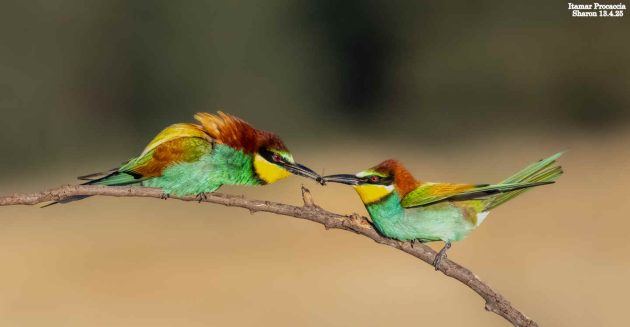
Fig. 3: Mating ritual – the male (left) brings a bee to the female (right)
Mating is done repeatedly during the morning hours (see Fig. 4). When ready, life moves to the end of the burrow, where a nesting room of a diameter of about 20 cm has been prepared. The number of eggs is 4-7, and incubation takes about 20 days. Feeding frequency increases when the chicks grow, reaching 50 times per hour towards the end. The chicks fledge and leave the nest when they are 30 days old and continue to be fed by the parents for three more weeks outside the nest.

Fig. 4: Mating of M. apiaster
While spectacular in their very colorful appearance, sometimes like jewels on a string (Fig. 5), the other two species of Bee-eaters in Israel are no less attractive.

Fig. 5: M. apiaster like jewels on a ring.
The Blue-cheeked Bee-eater (Merops persicus) is, like the M. apiaster, a migrant in Israel, but quite uncommon. It is a rare and local summer visitor in the Syrian African Rift Valley, along the Jordan River. Other nesting regions of M. persicus include North Africa, from the Atlas Mountains to the Nile Delta, from the south of Turkey to the Persian Gulf, and from the Caspian to Afghanistan and India. Outside the nesting season, it migrates to central and southern Africa. M. persicus prefers desert and semi-desert regions, scrublands with scattered trees, oases, and regions close to water. In Israel, it is found every year in the Spring Valley, south of the Sea of Galilee, a hot and arid region which nevertheless abounds with water sources.
M. persicus is somewhat larger than M. apiaster, reaching 38 cm in length and 39-56 grams in weight, see Fig. 6. Its food is quite identical to that of M. apiaster, focused on insects that are caught in flight. Incubation in the nest takes between 23 and 26 days. The young specimens are already self-sufficient before the blue cheek develops, see Figs. 7, 8.

Fig. 6: Merops persicus on a dry thistle, showing the typical arid vegetation of the region. The present individual is panting to cool in the intense heat.


Fig. 7, 8: Young M. persicus, already hunting on their own, but before they develop the blue cheek.
The third and last species of Bee-eater that is readily seen and photographed in Israel is the Little Green Bee-eater (Merops cyanophrys). The smallest of the three, and one of the smallest bee-eaters in the world, its length is around 25 cm, see Fig. 9.
Unlike the previous two species, it is not migratory and can be observed at any time in the desert regions of Israel. It favors deserts with spread trees that provide a perch for hunting insects in flight.
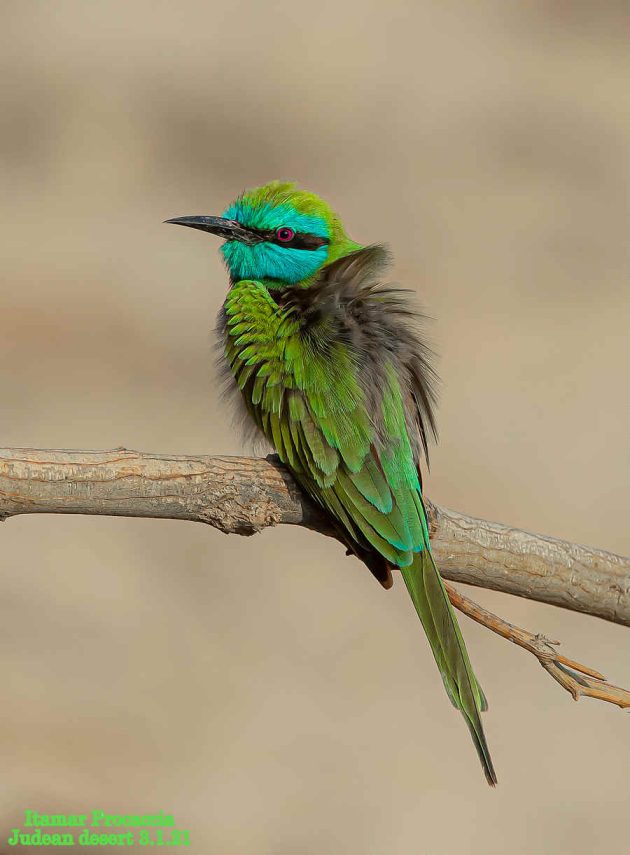
Fig. 09: Merops cyanophrys in the Judean desert, near Nebi Mussa.
Like the other Merops, it has a mating ritual, in which the male brings a present to the female, see Fig. 10.
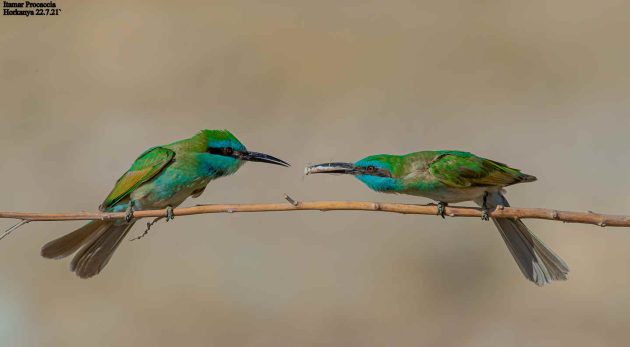
Fig. 10: Merops cyanophrys, will you marry me?
Having chosen the desert areas as its habitat, photographing M. cyanophrys is a pleasure; the light is perfect, and the desert surroundings offer superb backgrounds, see Fig. 11.
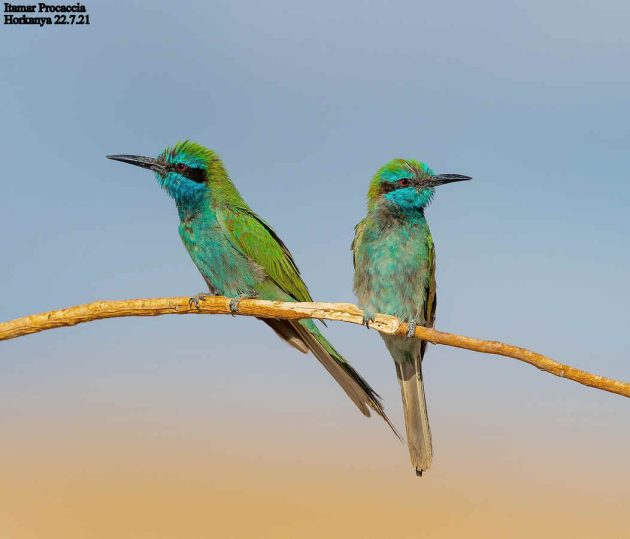
Fig. 11: A pair of M. cyanophrys on a perch.
M. cyanophrys nests during the months of May-June, in burrows dug in limestone slopes. In neighboring countries, it is widespread from West Saudi Arabia to Yemen, North Oman, and the Eastern Emirates. The spread of agriculture and watered areas has increased the number of insects and thus enlarged their habitat; in recent years, their population actually increased, defining their status as Least Concern.













Your photographs are fabulous. Thanks for sharing them.
The common name of M. cyanophrys is Arabian Green Bee-eater. It shares being a “green Bee-eater” with one from Africa (M. viridissimus) and one from Asia (M. orientalis). If you google “Little Green Bee-eater”, the Asian one comes up.
Excellent and impressive
Thanks ?
AviList 2025 agrees with Prof Hinow, there are three Green Bee-eaters, Itamar’s post features the Arabian Green Bee-eater. The African one is the greenest, the Arabian one the bluest (as the post’s pictures demonstrate really well) and the Asian species is more blue-green.
And obviously, the American Green Bee-eater was declared illegal by the Trump administration. Too woke, with this name.